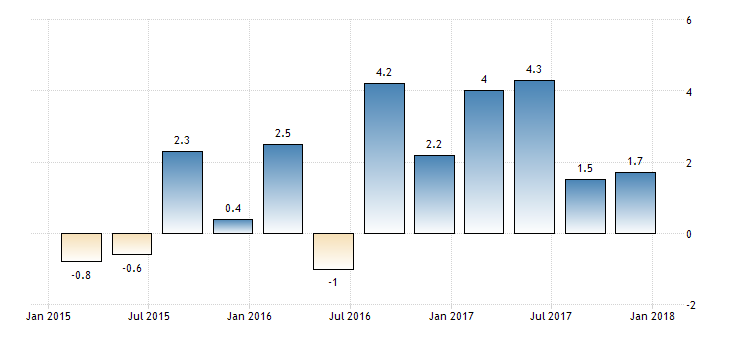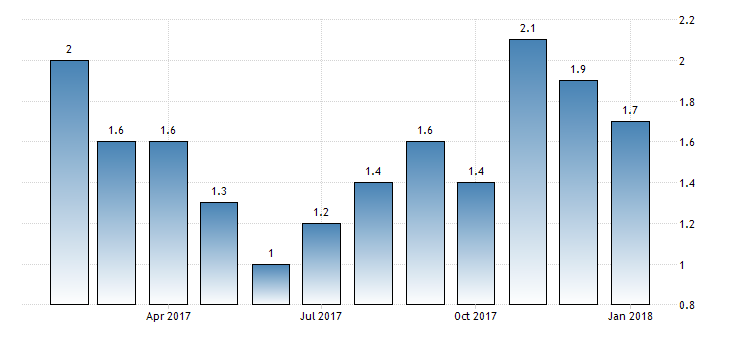
The state of the Canadian economy and the perspective of an increasing the interest rate by the Bank of Canada
On March 7, at a regular meeting of the Bank of Canada, it was decided to keep the interest rate at 1.25%, while the Central Bank didn’t receive information on a possible increase in the interest rate at the next meeting. The decision of the Bank of Canada to keep the interest rate at the current level can be explained by several reasons, such as a slowdown in oil prices, the possibility of changing trade conditions between the United States and Canada, as well as a number of economic indicators.
In this article, we will look at how the main economic indicators of Canada have changed, against the backdrop of a fourfold increase in the Bank of Canada discount rate since July 2017.
GDP of Canada
Gross domestic product (GDP) – is the main indicator of the country’s economy and, first of all, is considered by the leadership of the central bank when deciding on tightening monetary policy. According to the data below, for the last 3 years, Canada’s highest annual GDP growth rate was 4.3%, according to data for the second quarter of 2017, and it was in July 2017 that the Bank of Canada, for the first time in 2 years, raised its interest rate from 0 , 50% to 0.75%.
Chart.1 Dynamics of changes in GDP growth in annual terms from 2015 to 2018.
Unemployment rate
The unemployment rate is the percentage of the total number of the able-bodied population that is unemployed. Over the past year, the unemployment rate in Canada fell by 0.8%, from 6.6% to 5.8%, indicating positive processes in the labor market in the country. The growth of the able-bodied population positively affects consumer spending, thereby provoking an acceleration in the rate of inflation.
Chart. 2 Dynamics of changes in the unemployment rate from February 2017 to January 2018
The rate of inflation
Inflationary processes are an integral part of the country’s economic growth, while it should be noted that for stable economic development the rate of inflation should be within 2-3%, otherwise the growth rate of the economy will be less stable, which will negatively affect the attraction of new investments.
According to data for January, inflation in Canada slowed to 1.7%, compared with its maximum value for the past year at 2.1%. In turn, it should be noted that at the time of the first interest rate increase in July 2017 from 0.50% to 0.75%, according to the data, the inflation rate was at the level of 1.2%, which is almost the lowest value for the last year.
Chart. 3 Dynamics of changes in the inflation rate from February 2017 to January 2018
Conclusion
Making a conclusion based on the above dynamics of Canada’s key economic indicators, it can be noted that in the near future the Bank of Canada will not dare to raise the basic interest rate, as the slowdown in GDP growth and the inflation rate is most likely due to monetary tightening -credit policy. Therefore, the Central Bank’s management will rather take a wait-and-see position to get more information about the impact of a higher discount rate on the Canadian economy.
Alexander Sivtsov


